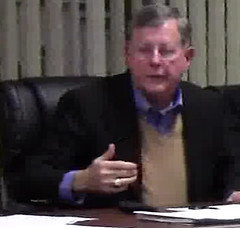Do fires at nuclear plants like Plant Hatch actually still occur? Yep, at the South Texas Nuclear Project, just this week. And that STP Unit 2 is a different design and newer (1989) than Hatch 1 or 2. Austin has been trying to sell its share in that lemon since 1981. Even TEPCO cancelled plans for new reactors there in 2011, due to cost overruns and the Fukushima disaster. What say we cancel our new nuclear lemons at Plant Vogtle?
According to the NRC event report for 9 January 2013:
UNUSUAL EVENT DECLARED DUE TO MAIN TRANSFORMER FIRE
“Fire in Unit 2 main transformer 2A. Reactor trip. Two train of offsite power lost to Unit 2.”
“An Unusual Event was declared based on EAL HU-2—Fire or explosion in protected area or switchyard which affects normal plant operations.”
At 1655 CST, South Texas Unit 2 declared an Unusual Event due to a main transformer fire. Unit 2 tripped from 100% power and is currently at 0% power in Mode 3. The transformer fire is out.
In addition to the loss of the main transformer, several safety related electrical busses and non-safety electrical busses lost offsite power. The appropriate emergency diesel generators started and powered the safety related busses. Unit 2 is currently stable and on natural circulation due to the loss of power to the reactor coolant pumps. Auxiliary feedwater is functioning as required and decay heat is being removed through the steam generator atmospheric relief valves. Unit 1 was unaffected by the event.
The licensee notified the NRC Resident Inspector.
Notified DHS SWO, FEMA, DHS NICC and NuclearSSA via email.
According to the NRC, they still don’t know Continue reading

















